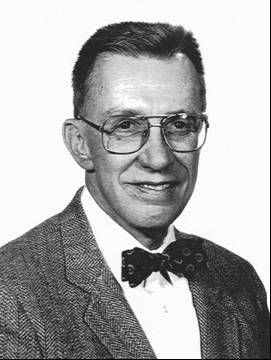from ISSMGE Bulletin: Volume 6, Issue 4 (p.19)
OBITUARY
Robert V. Whitman (1928-2012)

ROBERT V. WHITMAN, Professor Emeritus of Civil and Environmental Engineering at the Massachusetts Institute of Technology (MIT), died of Parkinson’s disease on February 25, 2012, at his home in Lexington, Massachusetts at age 84. He was world-renowned for his expertise and leadership in soil dynamics and geotechnical earthquake engineering, as an engineering educator, and for his dedication to public service.
Bob Whitman was born of academic parents on February 2, 1928, and raised in a small town near Pittsburgh, PA. After earning a BS degree (1948) in civil engineering from Swarthmore College, Bob attended MIT for his graduate studies in civil engineering, first in hydraulics and structural engineering (SM 1949), completing his doctorate (ScD) in structural dynamics in 1951. He joined Professor Donald Taylor’s geotechnical group as a Research Associate/Engineer and was appointed as an Assistant Professor of Civil Engineering in 1953. Apart from two years serving as an officer in the US Navy Civil Engineer Corps (1954-1956), Bob remained on the MIT faculty for the next 40 years, retiring as Professor Emeritus in 1993.
Whitman’s initial work with Taylor dealt with the effects of nuclear blasts on underground structures and marked the beginning of an illustrious career in the new discipline of soil dynamics. This included service on Air Force advisory panels for the design of hardened missile complexes and stable foundations for long-range radar stations. His research then expanded to the general problem of designing foundations with vibrating loads. Two ASCE papers co-authored with the late F.E. (Bill) Richart, Jr. in 1967, which treated the problem as a dynamically-loaded rigid disk resting upon an elastic half-space, represented a fundamental breakthrough in the understanding of foundation dynamics. Bob became one of the pioneers and leading experts in the area and generations of MIT students benefited from extensive drafts of his book on soil dynamics.
The devastating 1964 earthquakes in Alaska and Niigata, Japan, stimulated research on the effects of ground shaking on soil liquefaction and the associated damage to buildings and related infrastructure. Bob’s initial technical contributions to this new discipline of geotechnical earthquake engineering included developing the analytical method that was adopted for the well known and still widely used Newmark “sliding-block analysis” to estimate the movement of earth slopes during earthquakes. He then went on to: independently develop a method similar to the “Seed-Idriss Simplified Procedure” to predict the potential for soil liquefaction based on using in situ tests for assessing the sand’s resistance to shaking; draw the first national earthquake hazard maps utilizing probabilistic predictions developed by the U.S. Geological Survey (USGS); and draft the 1985 National Research Council (NRC) report Liquefaction of Soils During Earthquakes that still serves as a general guide for earthquake liquefaction analyses. Bob also served for five years as chair of ASCE’s Technical Council on Lifeline Earthquake Engineering and received its C. Martin Duke Award (1992).
Read more from ISSMGE Bulletin: Volume 6, Issue 4 (p.19)
![]() Download in PDF format
Download in PDF format




































